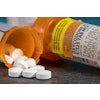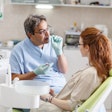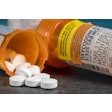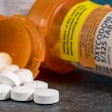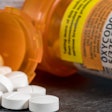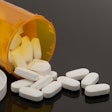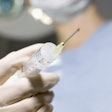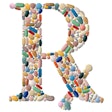
Opioid prescriptions by dentists and oral surgeons may lead to a statistically significant increased risk of persistent opioid use and abuse for adolescents and young adults, according to a major new study in JAMA Internal Medicine on December 3.
Patients who received an opioid prescription from a dental practitioner were at a statistically significant risk for persistent opioid use and a subsequent diagnosis of opioid abuse, the researchers found.
"The findings of our study suggest that opioid-naive patients who receive an opioid prescription from a dental clinician may be at risk for persistent opioid use and abuse," wrote the study authors, led by Alan Schroeder, MD. Dr. Schroeder is the associate chief for research in the division of pediatric hospital medicine at Lucile Packard Children's Hospital Stanford in Palo Alto, CA.
Opioid-naive patients
Opioids are sometimes prescribed for pain relief after third-molar surgery, so the researchers wanted to find out if this prescribing pattern led to opioid dependence, abuse, or both for opioid-naive adolescents and young adults.
“Opioid-naive patients who receive an opioid prescription from a dental clinician may be at risk for persistent opioid use and abuse.”
Their retrospective cohort study examined outpatient opioid prescriptions for patients ages 16 to 25 in 2015 using the research database from Optum, a health services company. This database provides claims information for 12 to 14 million privately insured patients in the U.S. Prescriptions were then linked by National Provider Identifier number to a clinician category.
The researchers started by identifying more than 754,000 individuals who continuously had healthcare insurance in 2015. They then reduced this number to more than 97,000 patients who received one or more opioid prescriptions. More than 30% (almost 30,000 patients) of this group received a prescription or prescriptions supplied by a dental clinician.
Almost half (14,800) of the 30,000 patients exposed to opioids, the researchers found. More than half of the opioid-exposed patients were women. A vast majority of these patients identified as white and had a mean age of almost 22 years.
The researchers compared this group with a control cohort of more than 29,000 randomly selected individuals who were not exposed to opioids. The control group's characteristics, such as sex, race, and age, were similar to those of the opioid-exposed group.
Almost 7% (more than 1,000 patients) of the exposed group received another opioid prescription up to a year later, compared with only 0.1% (30) of the much larger nonexposed group, the researchers reported. More than 860 (almost 6%) opioid-exposed individuals experienced at least one subsequent healthcare encounter in which they received an opioid abuse-related diagnosis, compared with only 115 (0.4%) nonexposed controls. The researchers noted one death in each cohort.
Greater scrutiny needed
The researchers listed several study limitations, including their reliance on International Classification of Diseases, Ninth Revision (ICD-9) and International Statistical Classification of Diseases and Related Health Problems, Tenth Revision (ICD-10) codes for diagnosing opioid abuse. Some misclassifications may have occurred, they noted.
They also pointed out that the Optum database they used only includes privately insured patients and the results may not be generalizable to other privately or publicly insured patients.
However, based on their study findings, the authors concluded that exposure to opioids from dental practitioners may be associated with an increased risk of opioid abuse.
"More scrutiny of third-molar extractions and opioid prescriptions associated with postoperative care is needed," they wrote.


